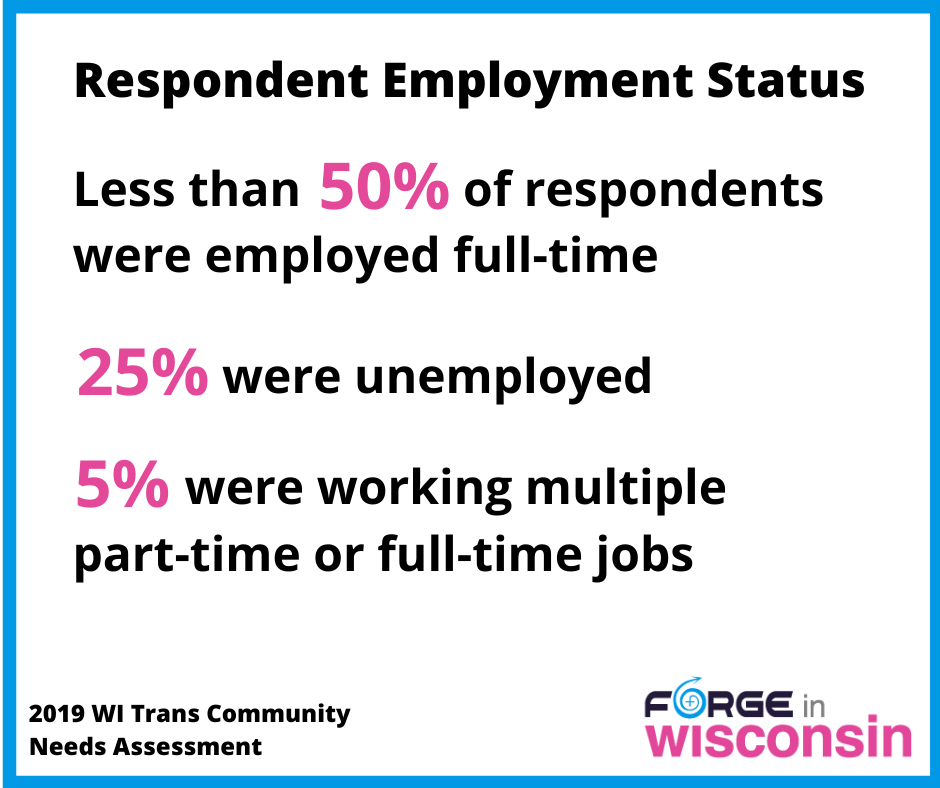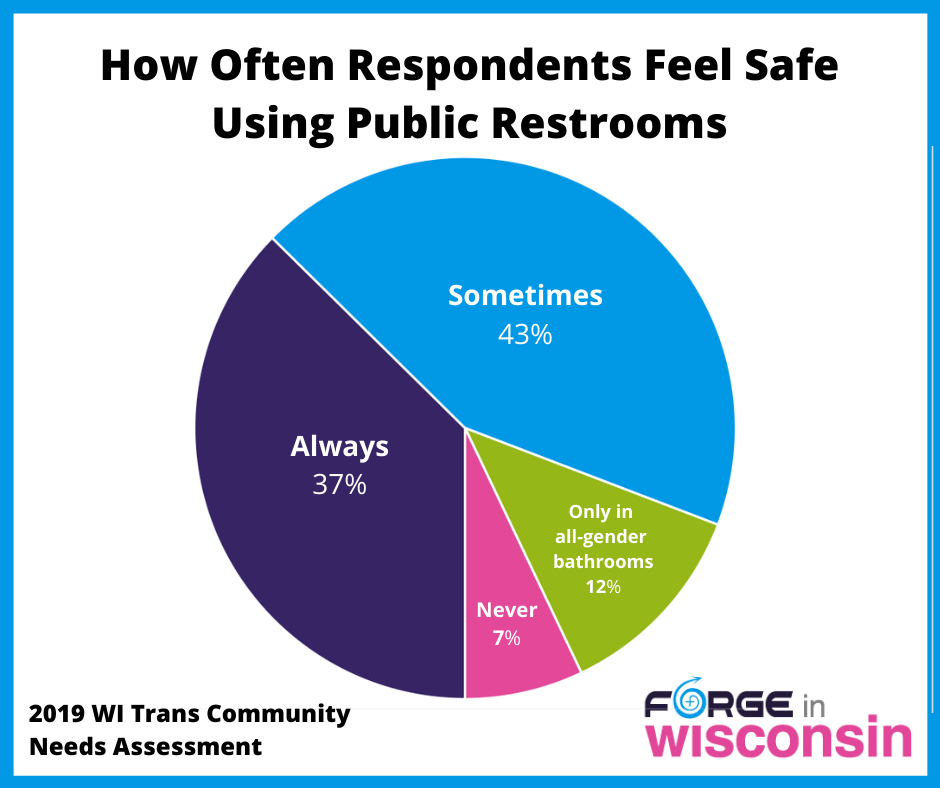Blog Post
Event Highlights
Policy & Legislation
Initial Data from WI Trans Community Needs Assessment
June 17, 2020

FORGE conducted a statewide community needs assessment in 2019 and 2020 to learn more about the experiences and needs of Wisconsin’s transgender/non-binary community. Survey data were collected online and in-person at Milwaukee’s 2019 PrideFest and in the months following.
Participants consisted of 523 survey respondents who completed the Wisconsin Transgender/Non-binary Community Needs Assessment. Respondents were filtered to focus on individuals who are closely connected to the community. The final sample analyzed included 453 respondents from across Wisconsin who self-identified as part of the trans/non-binary community.
While the following graphics highlight key initial findings, a forthcoming complete report will provide analysis of additional collected data to further highlight the experiences and needs of the Wisconsin trans/non-binary community.
Read June 18, 2020 Press Release with more information.
1 Respondent Identities
The survey sample included 453 respondents, who identified with the trans/non-binary community in Wisconsin in the following ways:

2 Employment status
Respondents reported the following as their current employment status:

3 Rights – areas of concern (top areas + violence at home)
Respondents identified the following areas of concern as the trans/non-binary community’s greatest needs:

4 Workplace discrimination
Respondents reported the following as the most commonly experienced types of discrimination in employment:

5 K-12 school experience
Gender-expansive children whose gender identity is known at school (and/or their parents) reported the following K-12 school experiences:

6 Public accommodations discrimination
Respondents reported the following as the most commonly experienced types of discrimination in public places:

7 Restrooms
Respondents reported the following as their experiences using public restrooms:

8 Housing discrimination
Respondents reported the following as the most commonly experienced types of discrimination in housing:

